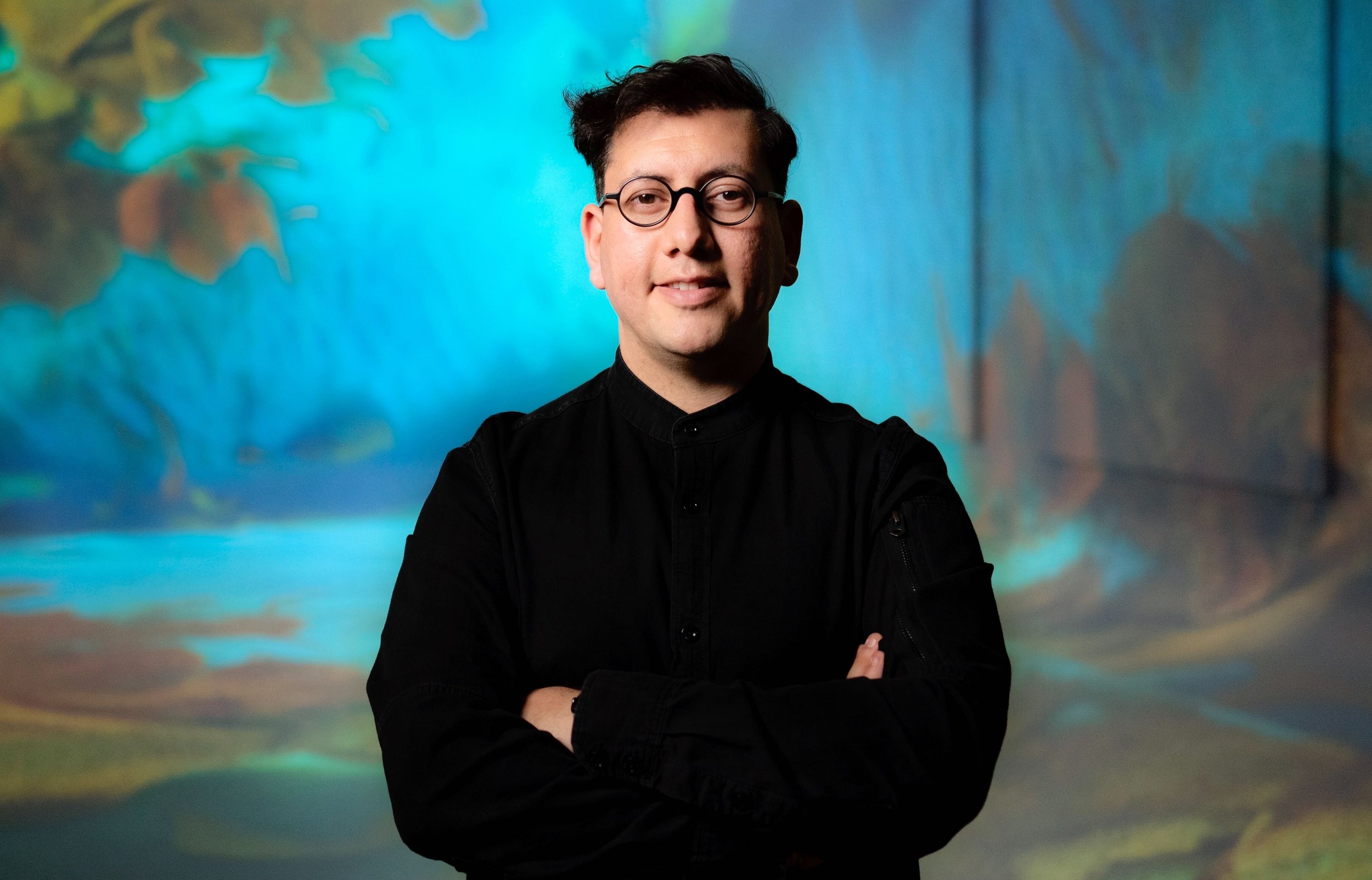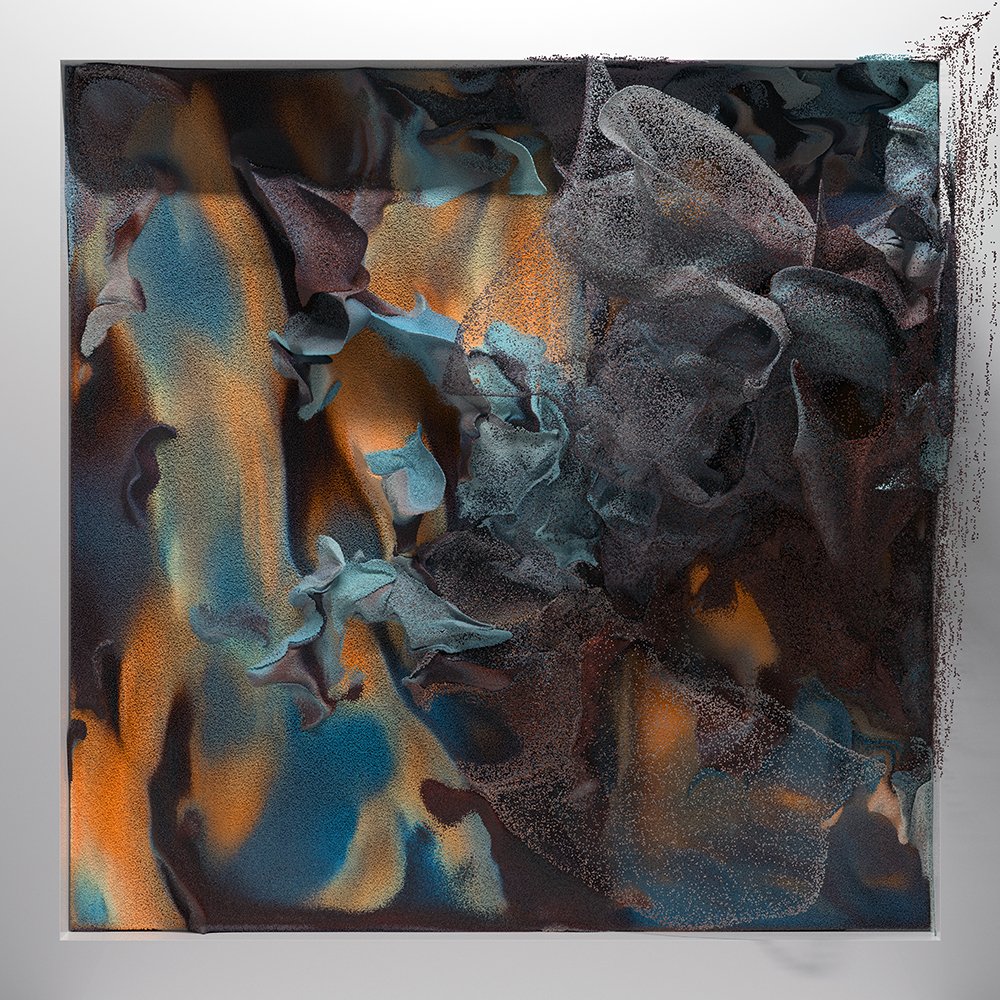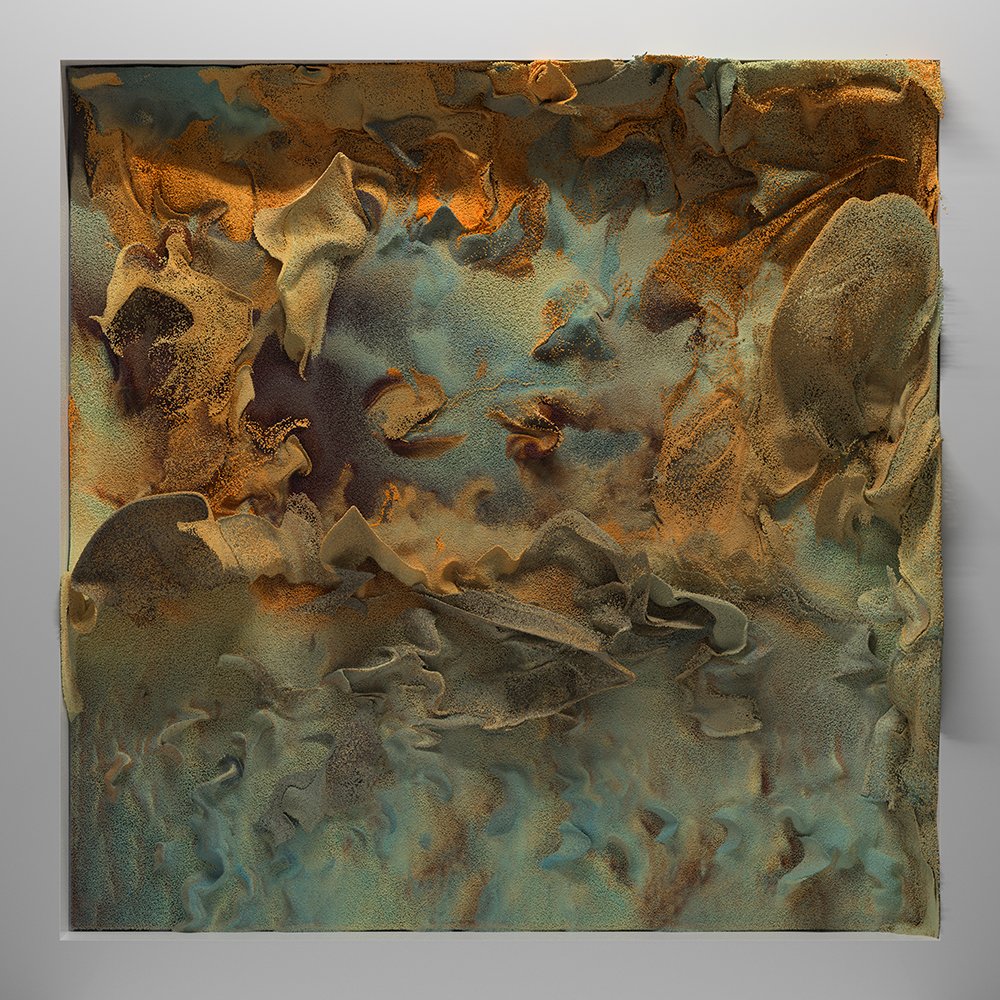Refik Anadol |Art pioneer in the age of machine intelligence
theFOUND Virtual Art Center this TALK with Refik Anadol. He is a media artist, director and pioneer of data aesthetics and artificial intelligence art. He is known as the "pioneer of artificial intelligence art in the 21st century" This time, the foundation Virtual Art Center has a dialogue and discussion with Refik Anadol and his team on the application and development of artificial intelligence art and multidisciplinary art. This is also the first time that Refik Anadol and his team have such an in-depth dialogue in China, introducing and analyzing his "virtual and real world" data, artificial intelligence narration and art creation from different dimensions Type.
Refik Anadol (b. 1985, Istanbul, Turkey) is a media artist, director and pioneer in the aesthetics of data and machine intelligence. His body of work locates creativity at the intersection of humans and machines. In taking the data that flows around us as the primary material and the neural network of a computerized mind as a collaborator, Anadol paints with a thinking brush, offering us radical visualizations of our digitized memories and expanding the possibilities of architecture, narrative, and the body in motion. Anadol’s site-specific AI data sculptures, live audio/visual performances, and immersive installations take many forms, while encouraging us to rethink our engagement with the physical world, its temporal and spatial dimensions, and the creative potential of machines.
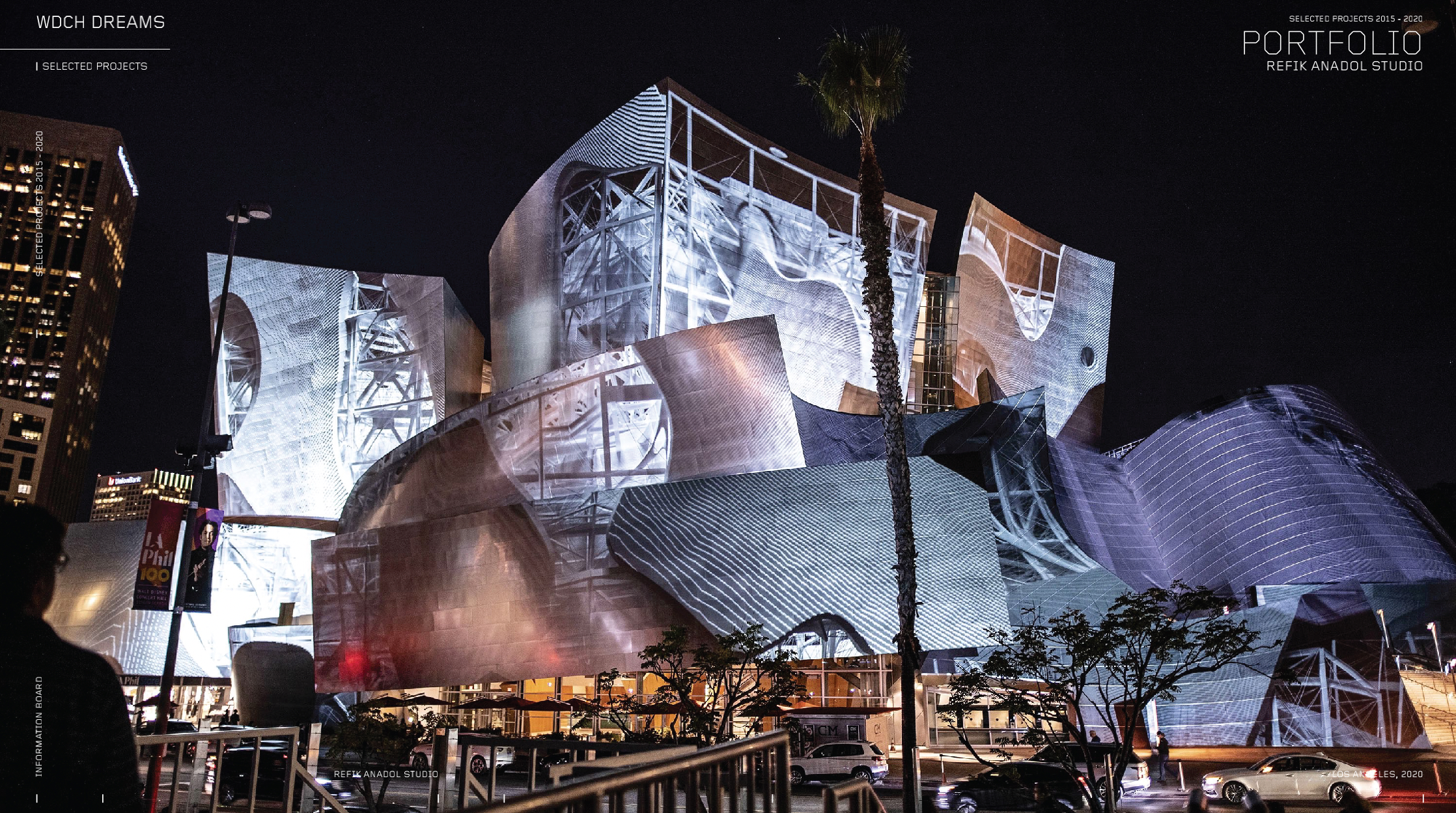

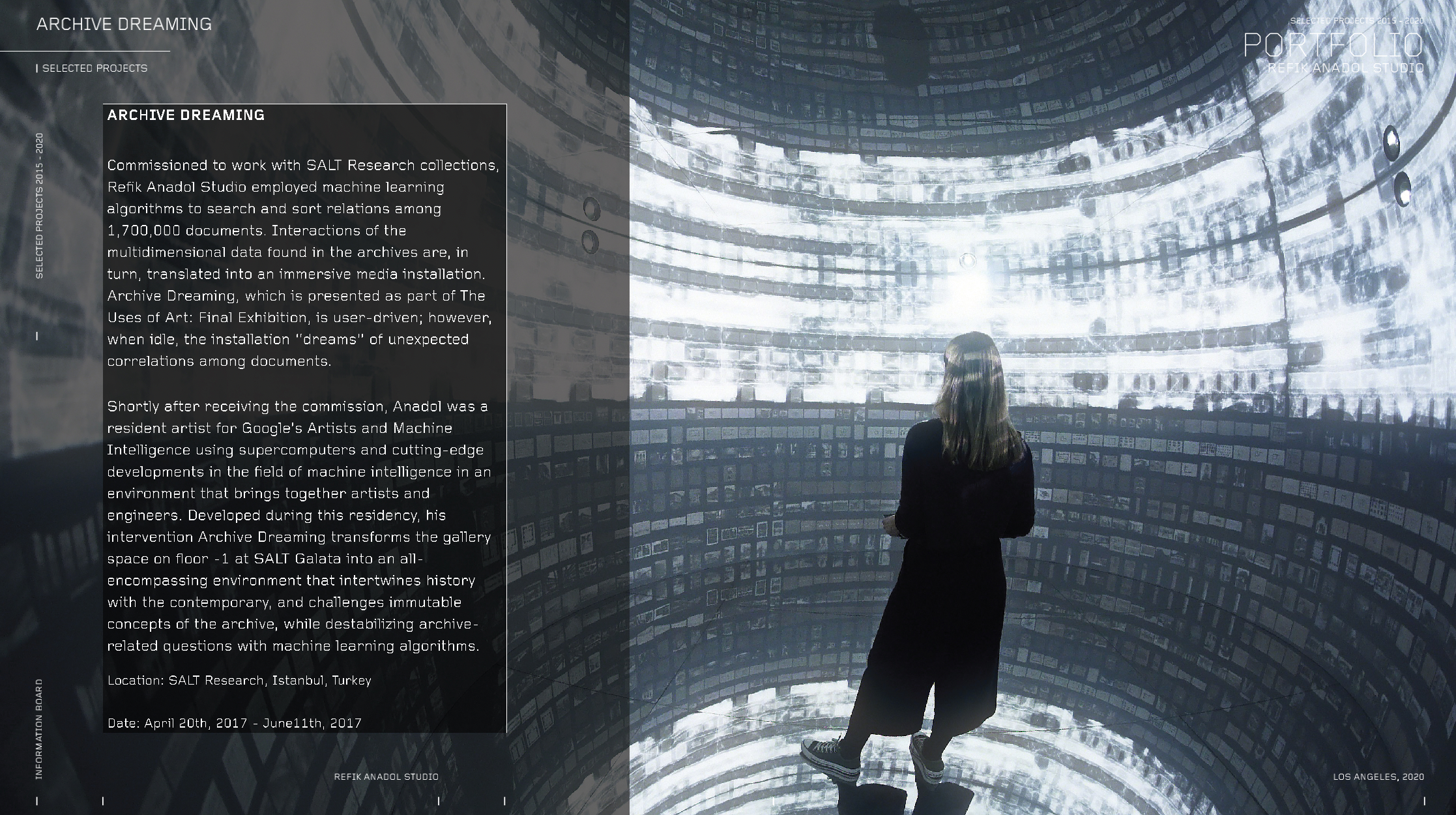
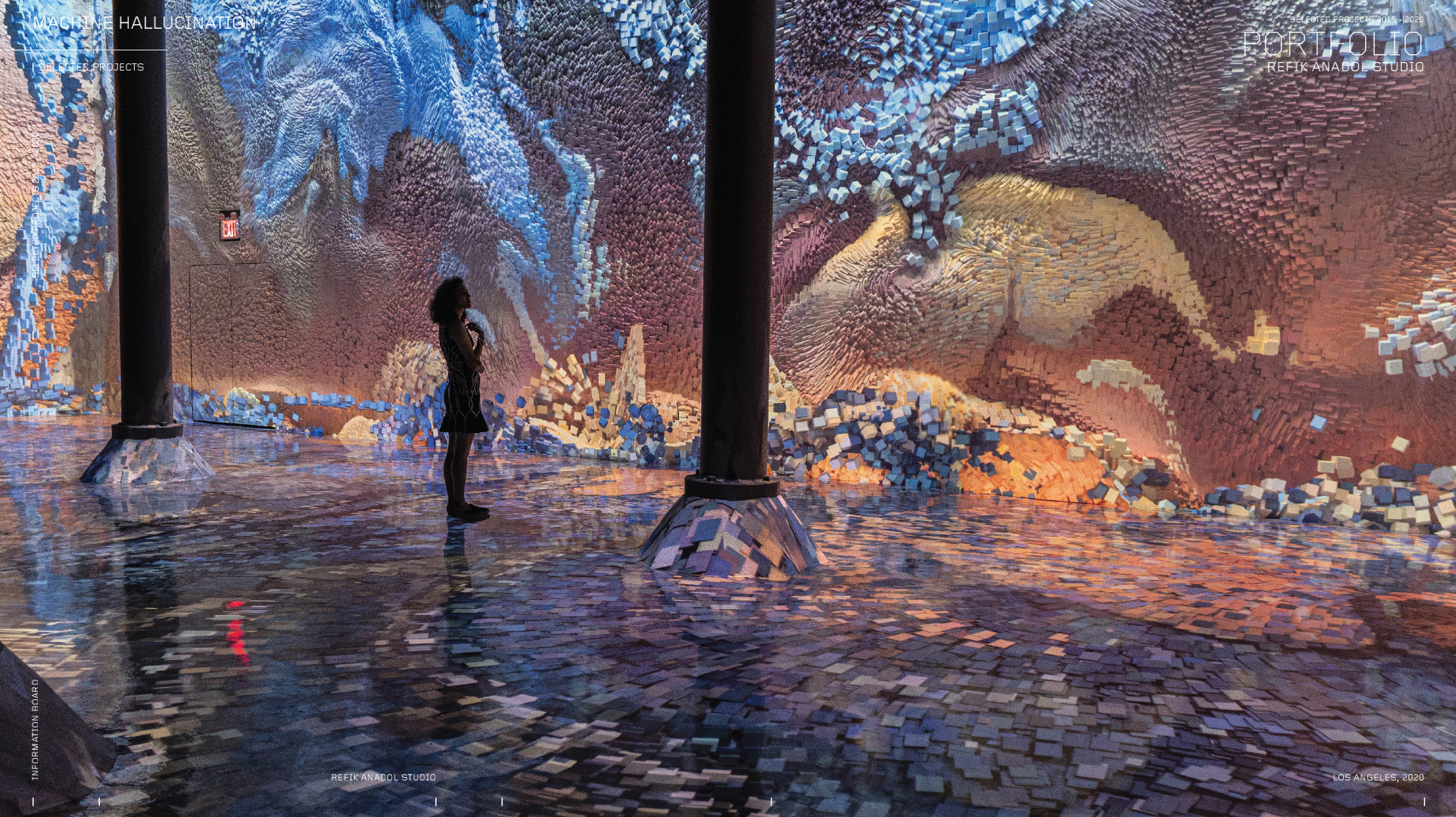
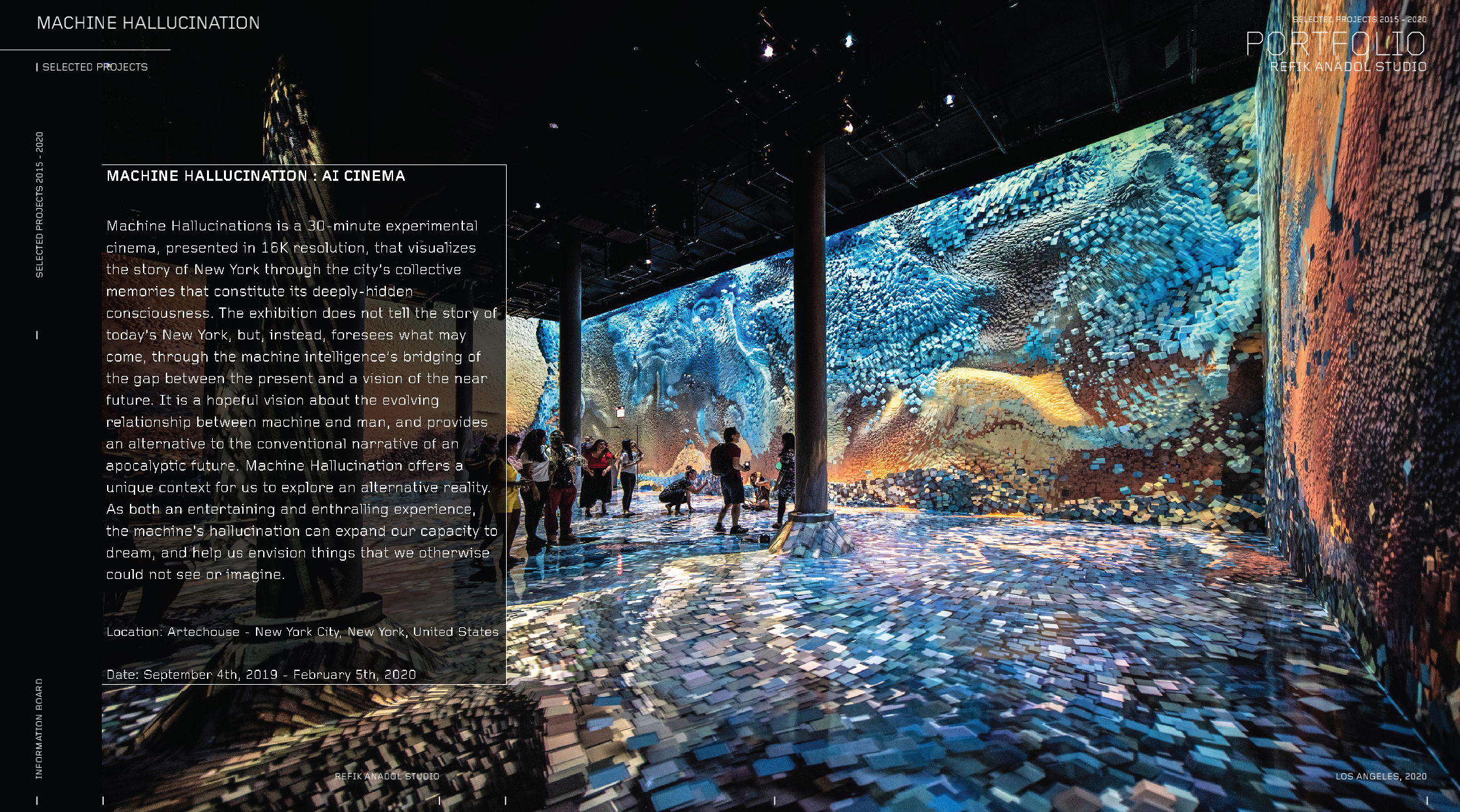
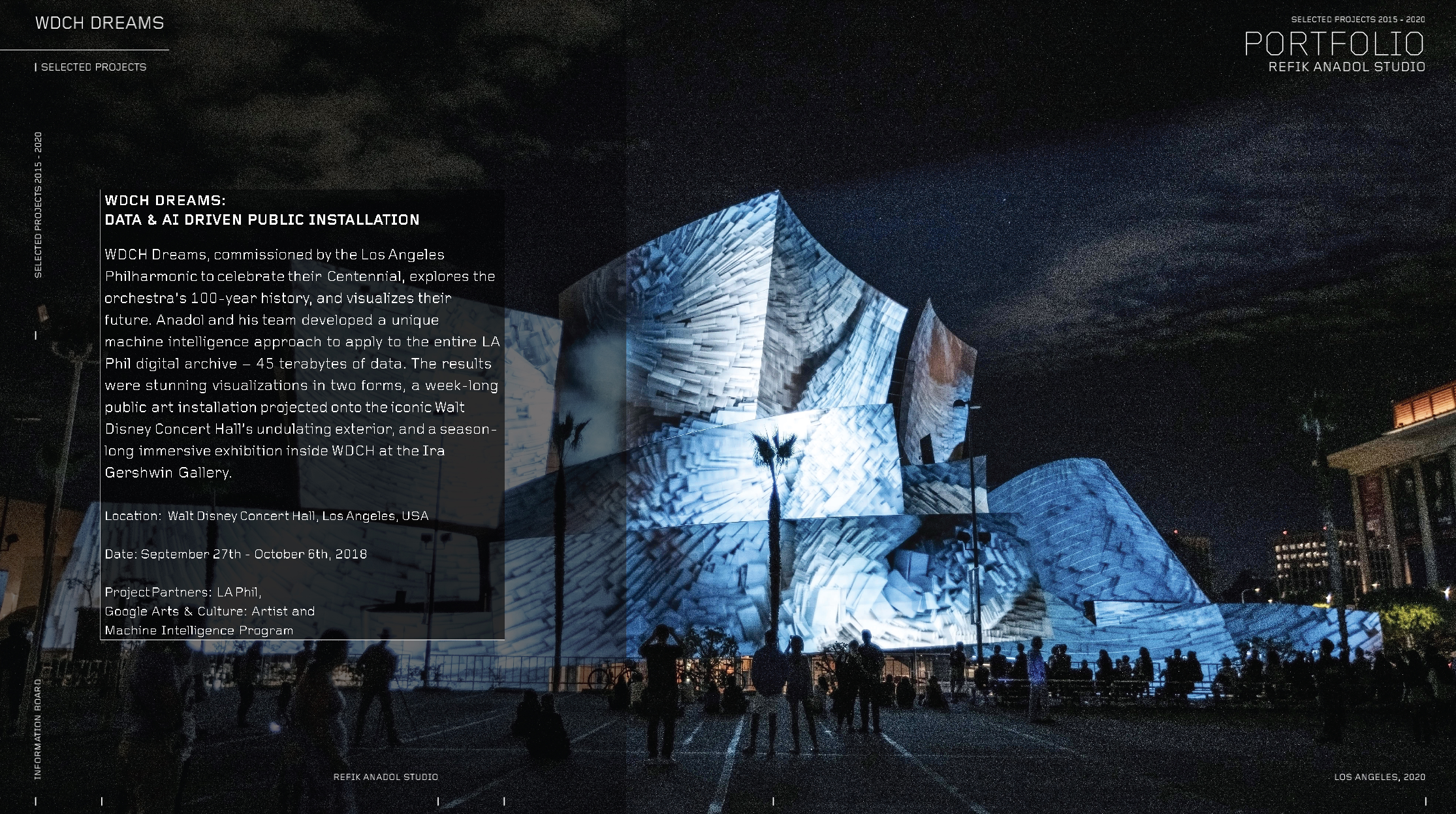
Refik Anadol is a media artist, director, and pioneer in the aesthetics of machine intelligence. He currently resides in Los Angeles, California, where he owns and operates Refik Anadol Studio and RAS LAB, the Studio’s research practice centered around discovering and developing trailblazing approaches to data narratives and artificial intelligence. Anadol is also a lecturer for UCLA's Department of Design Media Arts from which he obtained his Master of Fine Arts.
Anadol’s body of work addresses the challenges, and the possibilities, that ubiquitous computing has imposed on humanity, and what it means to be a human in the age of AI. He explores how the perception and experience of time and space are radically changing now that machines dominate our everyday lives. Anadol is intrigued by the ways in which the digital age and machine intelligence allow for a new aesthetic technique to create enriched immersive environments that offer a dynamic perception of space.
By proposing the possibility of “post-digital architecture,” Anadol invites his audience to imagine alternative realities by re-defining the functionalities of both interior and exterior architectural elements. He tackles this by moving beyond the integration of media into building forms and translating the logic of a new media technology into art and design.
Residing at the crossroads of art, science, and technology, Anadol’s site-specificthree-dimensional data sculptures and paintings, live audio/visual performances, and immersive installations take varied virtual and physical forms. Entire buildings come to life, floors, walls, and ceilings disappear into infinity, breathtaking aesthetics take shape from large swaths of data, and what was once invisible to the human eye becomes visible, offering the audience a new perspective on, and narrative of their worlds.
The primary thread that runs throughout Anadol’s groundbreaking visualizations of the unseen world is data: for Quantum Memories, 200 million photos of Earth and its landscapes, oceans and atmosphere were used to visualize an alternate reality of nature; for Sense of Space at the 17th International Architecture Exhibition - La Biennale di Venezia - approximately 70 terabytes of multimodal MRI data, including structural, diffusion (DTI) and functional (fMRI) scans of people ranging from birth to nonagenarians was used to design the human brain-inspired artwork; archival photographic data of our universe from NASA/JPL was the driving force behind Machine Memoirs: Space, Istanbul’s most visited exhibition ever; for Machine Hallucination, 113 million publicly available images of New York City were used to envision the near future of a storied city; for WDCH Dreams, 100 years of the Los Angeles Philharmonic’s digital archives were tapped to inspire the visuals projected onto Frank Gehry’s iconic building; for Oakland’s Sense of Place, real-time environmental data such as wind, temperature, and humidity as well as invisible communication signals from Bluetooth, Wifi and LTE inform the work; for Berlin’s Latent Being, the visitors themselves provided real-time data for the artificial thinking process; and for Charlotte Airport’s Interconnected, real-time airport statistics such as arrivals/departures, baggage handling systems and ground shuttle transportation transform into an ever-changing suite of abstract form, color, and simulated texture.
Refik Anadol ’s global projects have received a number of awards and prizes including the Lorenzo IL Magnifico Lifetime Achievement Award for New Media Art, Microsoft Research’s Best Vision Award, if Gold Award, D&AD Pencil Award, German Design Award, UCLA Art+Architecture Moss Award, Columbia University’s Breakthrough in Storytelling Award, University of California Institute for Research in the Arts Award, SEGD Global Design Award, and Google’s Artists and Machine Intelligence Artist Residency Award.
Anadol’s site-specific audio/visual performances have been featured at iconic landmarks, museums and festivals worldwide, such as the 17th International Architecture Exhibition - La Biennale di Venezia, the National Gallery of Victoria, Walt Disney Concert Hall, Hammer Museum, Dongdaemun Design Plaza, Artechouse, The Centre Pompidou, The Portland Building, Daejeon Museum of Art, Florence Biennale, Art Basel, OFFF Festival, International Digital Arts Biennial Montreal, Ars Electronica Festival , l’Usine | Genève, Arc De Triomf, Zollverein | SANAA’s School of Design Building, santralistanbul Contemporary Art Center, Outdoor Vision Festival, Istanbul Design Biennial, Sydney City Art, and Lichtrouten, among many others.
Refik Anadol Studio comprises artists, architects, data scientists, and researchers from diverse professional and personal backgrounds, embracing the principles of inclusion and equity throughout every stage of production. Studio members originate from 10 different countries and are collectively fluent in 14 languages. The Studio’s internship program also demonstrates a strong commitment to mentoring young people from a variety of personal experiences, values, and world views.
A pioneer in his field, and the first to use artificial intelligence in a public artwork, Anadol has partnered with teams at Microsoft, Google (Artist and Machine Intelligence), Panasonic, Nvidia, JPL/NASA, Intel, IBM, Siemens, Epson, MIT, UCLA, Stanford University, and UCSF, to apply the latest, cutting-edge science, research and technologies to his work.
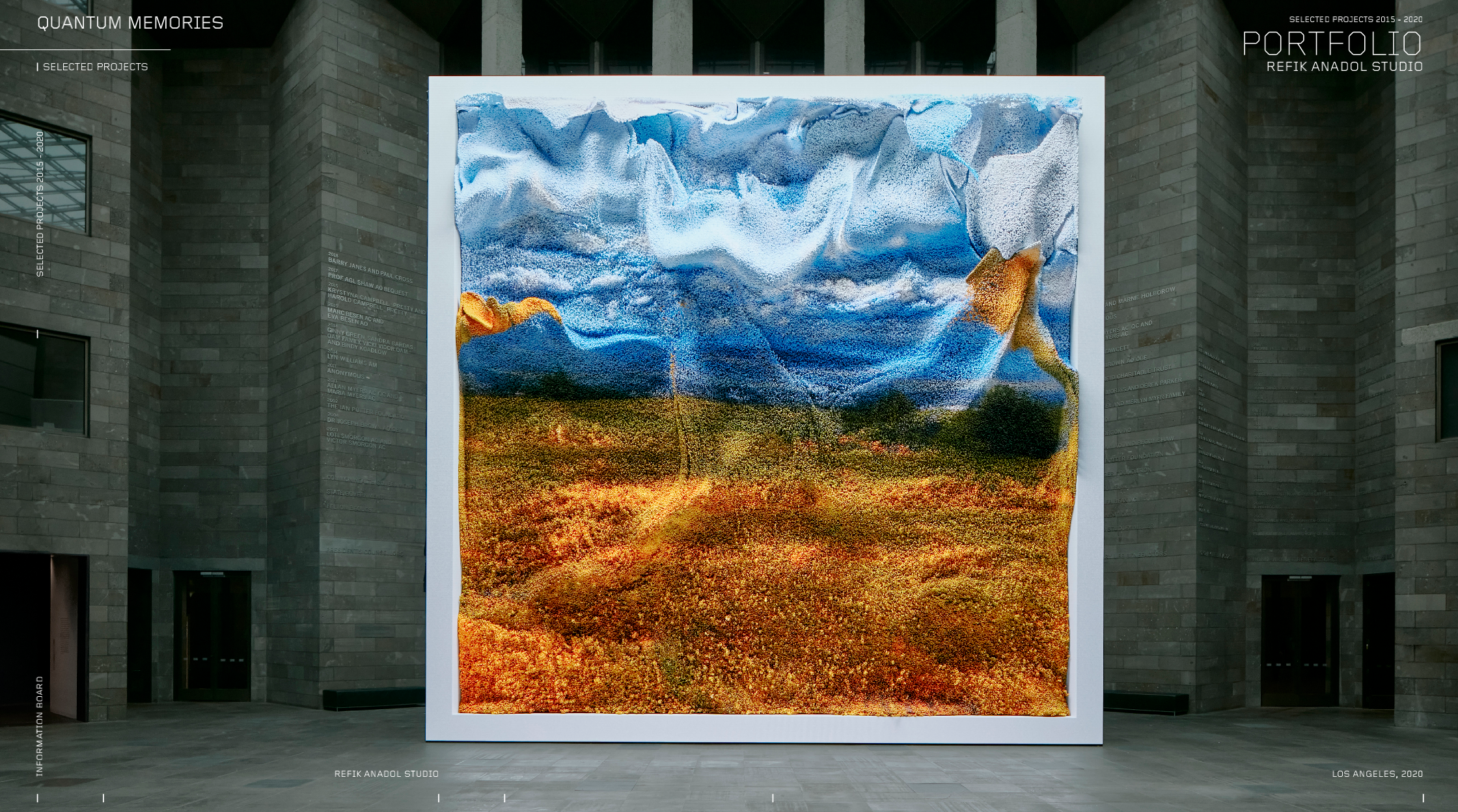
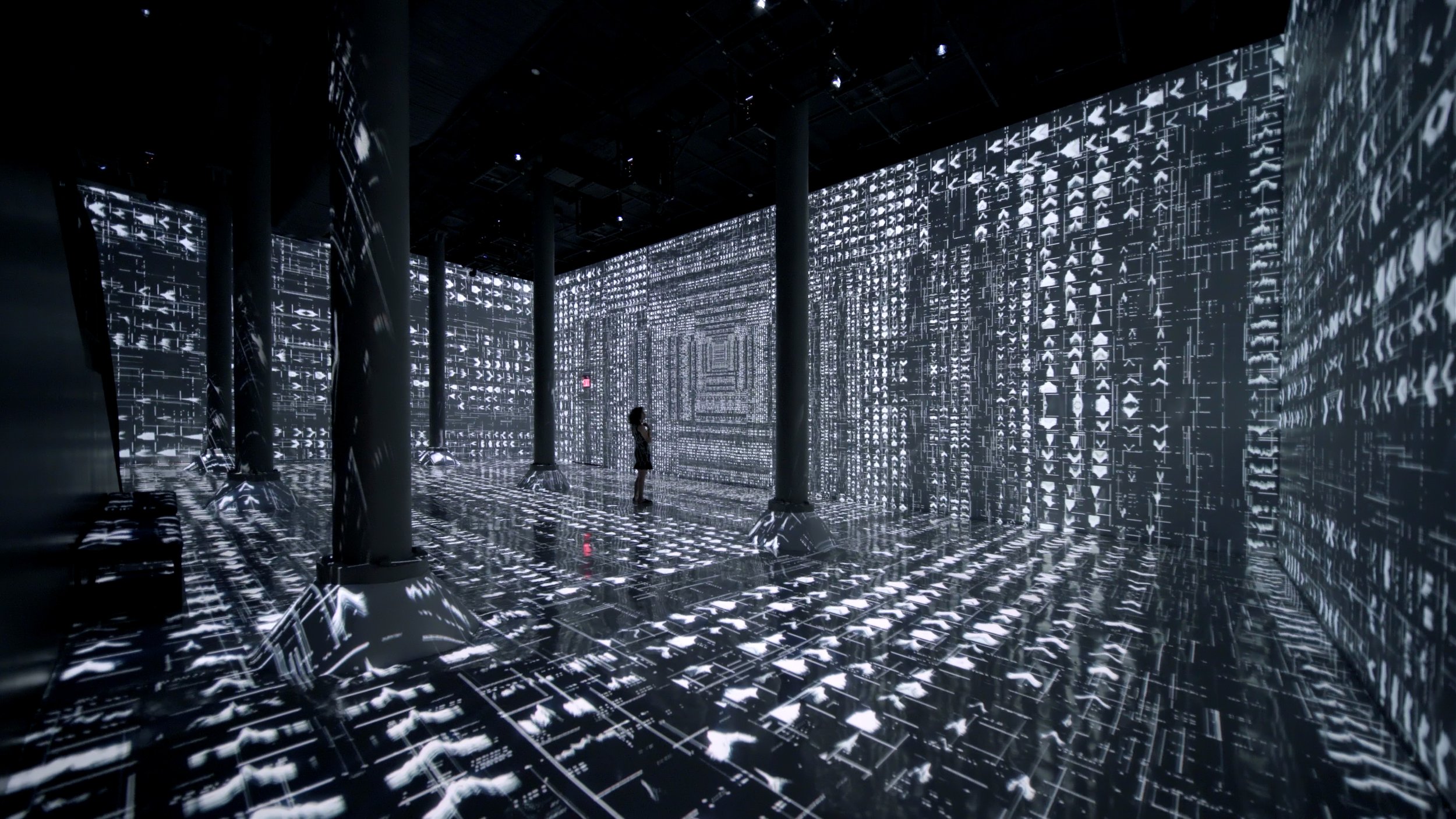
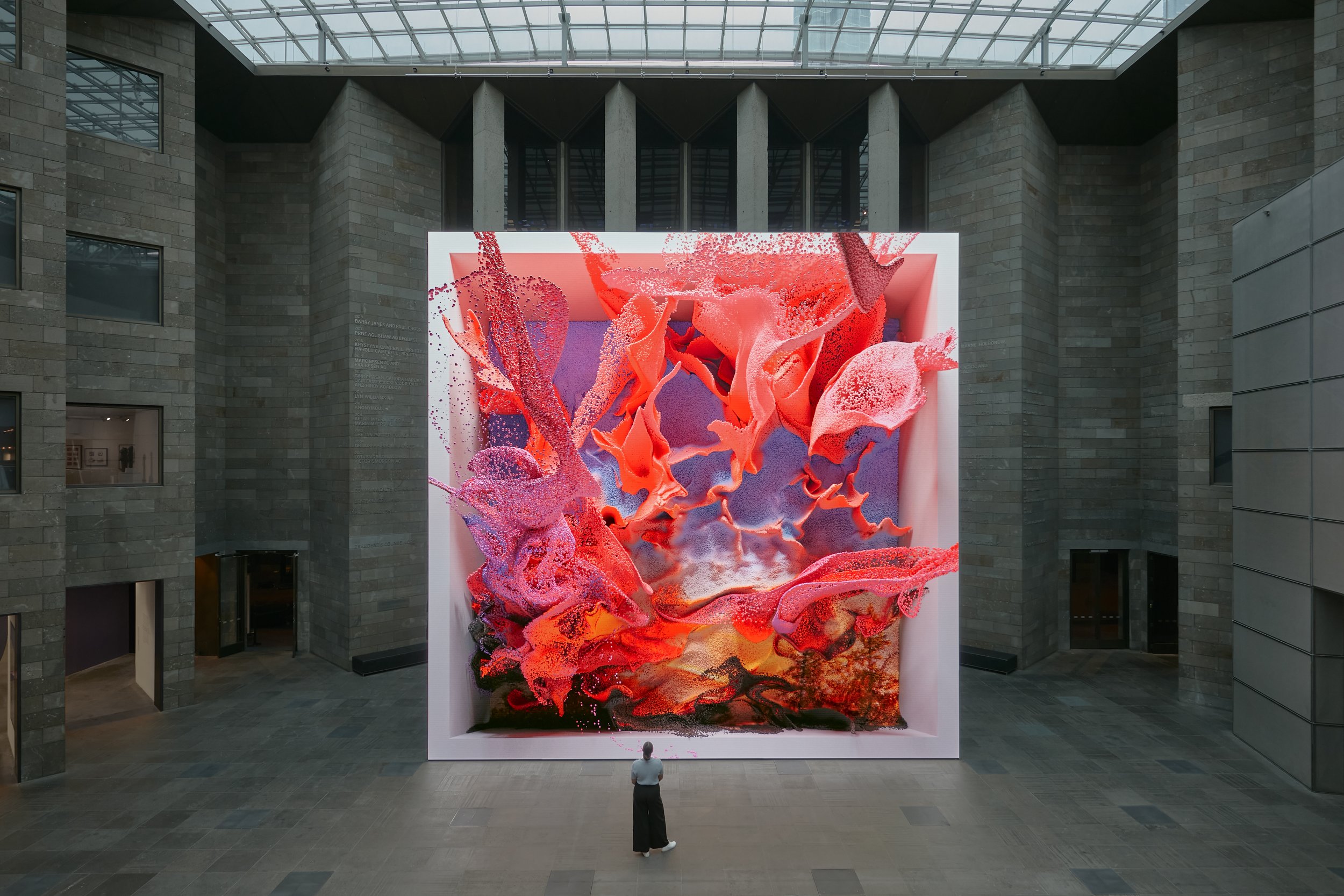
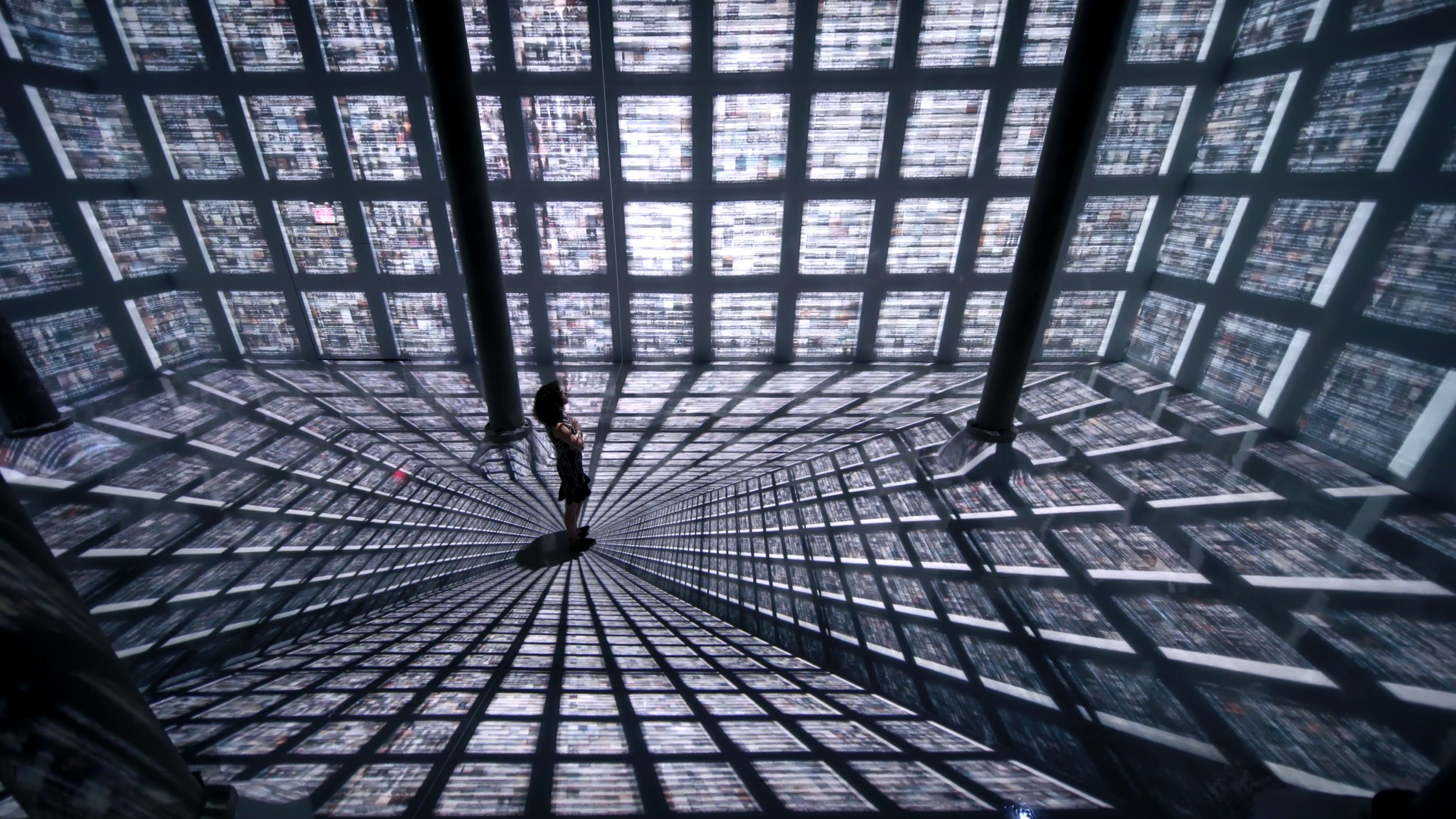
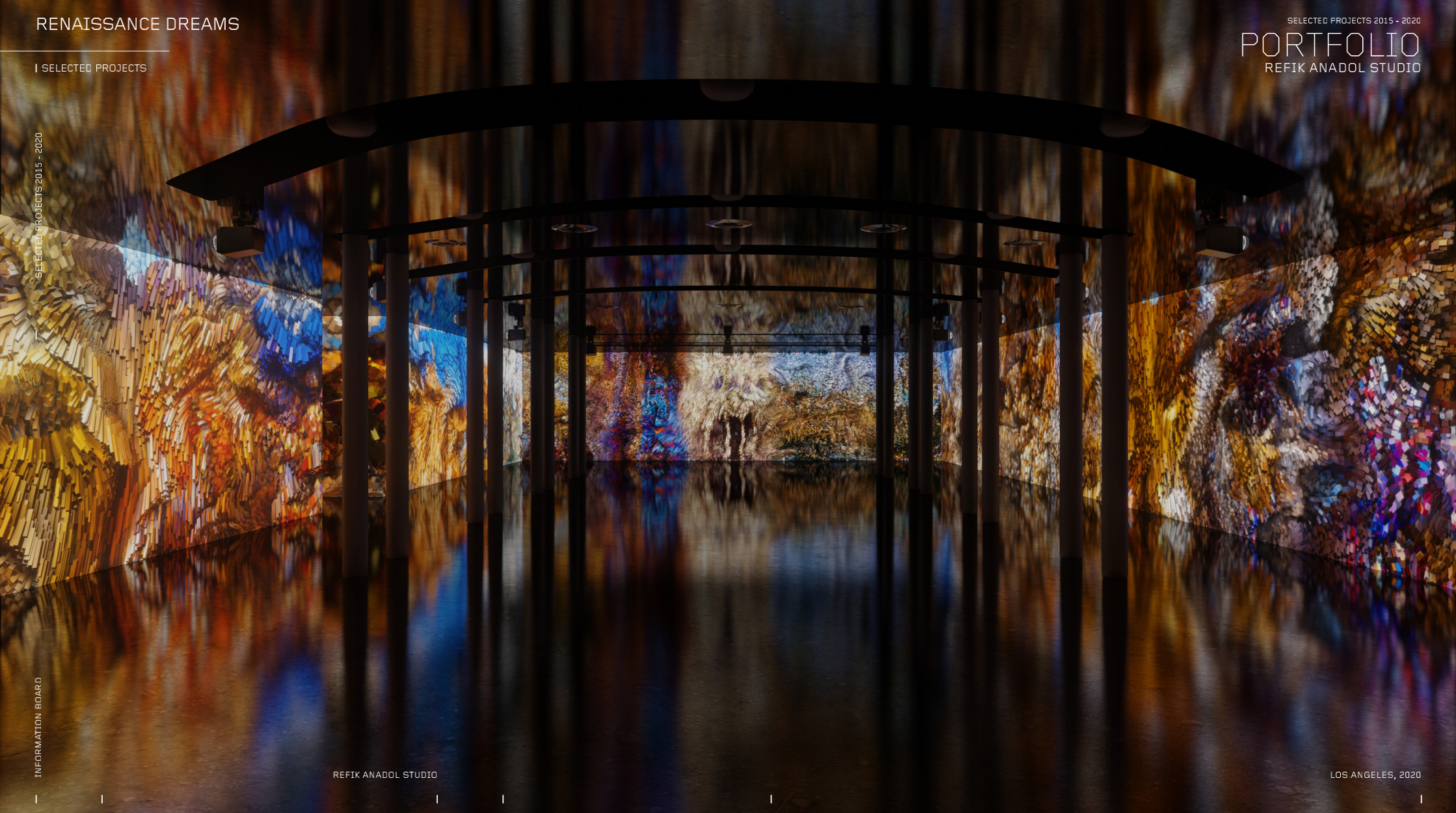
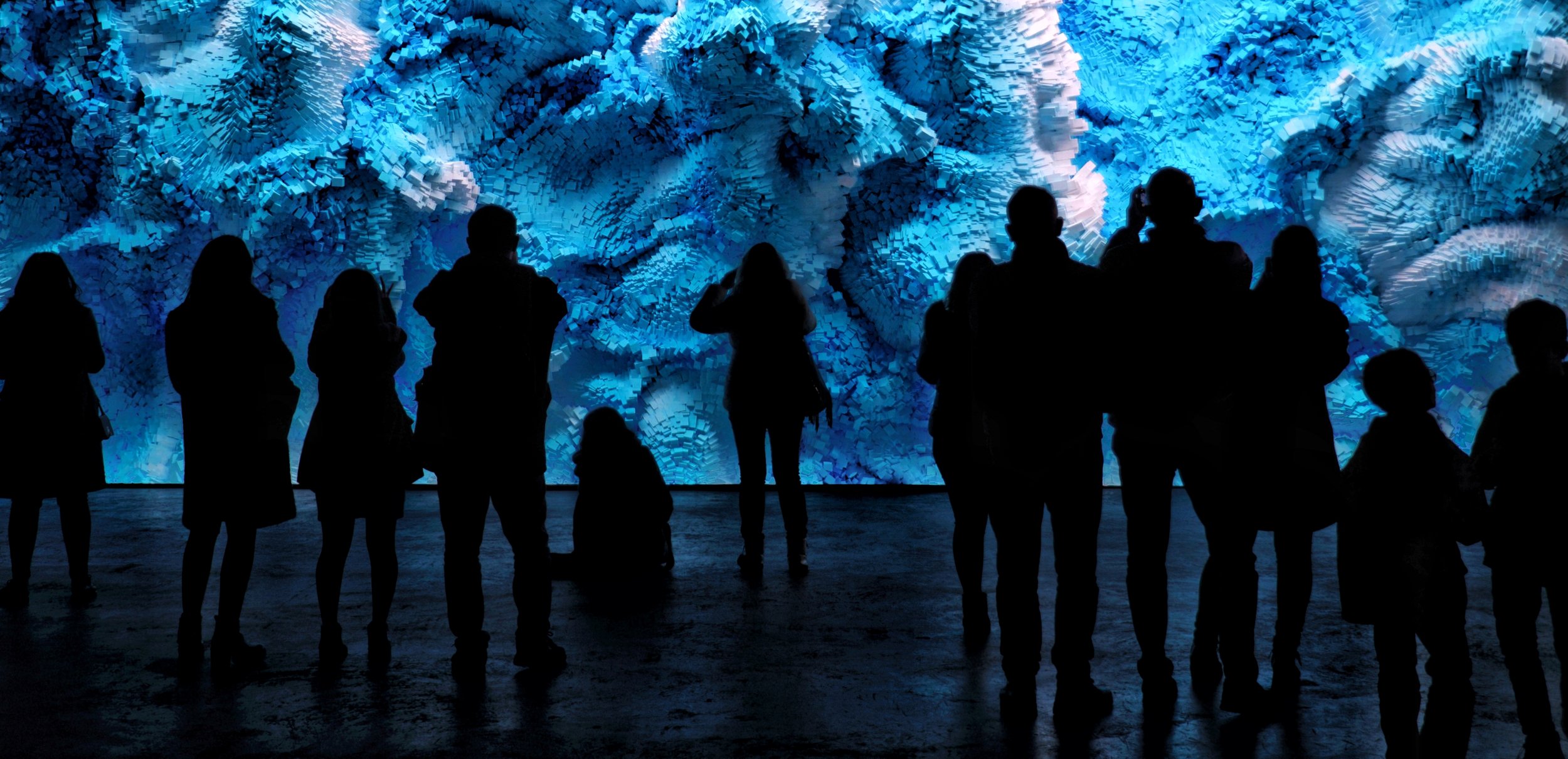
Q&A
theFOUND & Refik Anadol
Q1:
As a pioneer of artificial intelligence art. How do you define the meaning of artificial intelligence art in the 21st century? And what new meanings and possibilities will there be in the future?
As an artist inspired by the cognitive capacity of humans, for me, AI can be an extension of the human mind to represent certain cognitive capacities and to understand them much better. For example, in my art, my process tries to mimic the human mind’s capacity for remembering, learning, dreaming or hallucinating, and to use it as a tool to better understand these specific cognitive capacities of ourselves. My understanding from leaders in this field is that every single day, we are seeing a new version of AI solving more challenging problems. The best example recently is Deep Mind’s AlphaFold which is being used to solve the “protein folding problem,” which has stood as a challenge in biology for the past 50 years. I believe we will first be seeing these kinds of breakthroughs to solve persistent scientific problems. Then, maybe, with AI we will be able to talk about what consciousness is and how we can understand the world around us much better.
Q2:
In 2014, you set up Refik Anadol Studio. What was the opportunity to decide to set up a studio and start practicing the art concept of artificial intelligence?
The idea of opening a studio really started solidifying in my mind in 2011. I was pretty sure I would love to have a studio rather than being a one person game. I never believed in an egocentric journey or that just one mind can solve everything. I was always aware that collective intelligence would be what I needed to go beyond my skill set, and more deeply understand some concepts in my work. In 2014, during the time I was getting my second MFA at UCLA, I started researching the studio culture, logic, how it works, how it can be the best way for me, and how I can have the team I need. Around that time I embarked on my first journey using data as a pigment, and also embedded media arts in architecture as a team. The AI part came in 2016 during my residency at Google AMI, and that was a breakthrough for our studio because since then, we have been using AI in our work. So, I think data was the first phase of the practice, and then AI and data were the second phase, and then for the third phase, I see AI, neuroscience and architecture coming together.
Q3:
When you were 8 years old, you saw the movie ‘Blade Runner’, which has exerted a great influence on your imagination. What does this movie mean to you? How did your childhood growing up in Istanbul and your life in Los Angeles affect you?
The movie itself is something. At that age, I was not purely understanding the deeper concept of how Philip K. Dick actually represents android logic. But, I was super inspired by the depiction of the near future in the movie - how the urban space was transcoded into this whole new universe, especially flying cars and most importantly two androids discussing that the memories were someone else’s memories. I think the idea of what a machine can do with someone else’s memories kind of started as an idea in my mind at that time. Also, the movie inspired me about the near future of architecture. At the same age, I got my first real computer and I was super inspired by gaming culture. While growing up in Istanbul, I was always questioning why my walls and windows and doors and floors were always the same. Why couldn’t it be like the video games and the environments of the games? They are not represented in the real world. And, I was really questioning myself every day wondering where do those games come from and can I go there literally, physically. Or those in the game - could they come back to the physical world? I was trying to find a portal between the games and real life. So my childhood was a lot of imagination between a machine’s mind and the real world and the boring architecture of life.
Q4:
Many people marvel and admire your works. Can you share with us how to describe your ‘world’. What kind of person do you think you are ?( Everyone who has visited your artworks will exclaim “My God! What kind of world is in his mind! It’s amazing!) What kind of experience do you want to create for visitors ——‘world’?
I love this question. First of all, I’m a very positive and optimistic mind. I am not driven by negativity. I don’t want to bring another problem to the world, in fact, I am trying to bring beauty. In the works we are creating, the common theme, most of the time is inspiration, beauty and aesthetics. We’re trying to imagine the near future, with a responsible mindset. I’m not saying that I’m ignoring any ramification or potential problem with the systems, hardware or machines we use, but I am saying that there’s this other potential of this world where we can ask, “what else can we do with them?”
Our Studio aims to create art for anyone - of any age, any background. So in the work, a common thread is finding narrative and language, a new kind of mathematics that can be understood by anyone in the world. So, my world is pretty open to anyone in the world. It also poses the challenges of how to create a new kind of experience that can be understood and perceived, and might also inspire new generations.
Also in my mind, is that humanity is actually much more thoughtful than how we are thinking right now. I do not believe that fears are useful for humanity. I do believe that inspiration is what we need - being thoughtful and being aware of our surroundings and understanding this world around us is very important.
So, these kinds of questions and experiences are roughly my world. And, it’s completely inspired by art, science and technology. I try to give new perspectives in life, especially when the virtual and physical world collide. There is this liminal feeling, sometimes you don’t know where you belong, sometimes the walls are melting, the algorithms are becoming sculptures, a machine’s mind can become a space, and you can feel what it is to be inside infinite space.
Q5:
You make visualizing the micro world, data and human brain memory through computer algorithms. There are many amazing masterpieces ,<Archive is dreaming>, <Infinity room>and <WDCH Dreams>. Where is your creative inspiration?
I’m really starting to feel that our current understanding of architecture is very limited. If you look at the classical architecture discipline, unfortunately, it’s stuck in these predictions by using concrete, glass or metal or steel. But, when we view light as a material that opens up a whole new creative world. My inspiration comes from that near future experience - a world where the data and the light becomes a pigment and material. And, in that universe, every single surface - architecture, building, facades, anywhere in the world - becomes a canvas. So, everything becomes a canvas. And, everything can become a pigment. I am also heavily inspired by science fiction and science itself. The projects you mentioned are speculating the future of a library, the future of an architecture, and even an architecture that can dream. I think these inspirations are fundamental in my practice and I’m really trying to convince myself, but also understand that when the machines and the buildings come together there’s an incredible inspiration for humanity. I’m trying to close that gap by speculating these experiences.
Q6:
You make visualizing the micro world data and human brain memory through computer algorithms. There are many amazing masterpieces <Archive is dreaming> <Infinity room>and <WDCHDreams>. Where is your creative inspiration?
I’m really starting to feel that our current understanding of architecture is very limited. If you look at the classical architecture discipline, unfortunately, it’s stuck in these predictions by using concrete, glass or metal or steel. But, when we view light as a material that opens up a whole new creative world. My inspiration comes from that near future experience - a world where the data and the light becomes a pigment and material. And, in that universe, every single surface - architecture, building, facades, anywhere in the world - becomes a canvas. So, everything becomes a canvas. And, everything can become a pigment. I am also heavily inspired by science fiction and science itself. The projects you mentioned are speculating the future of a library, the future of an architecture, and even an architecture that can dream. I think these inspirations are fundamental in my practice and I’m really trying to convince myself, but also understand that when the machines and the buildings come together there’s an incredible inspiration for humanity. I’m trying to close that gap by speculating these experiences.
Q7:
Your team comes from computer engineers, architects, designers, artists, musicians, data experts, laboratories, etc. Do you have any different experience in working with people in different fields?
It’s a remarkable experience when we start to think as a collective rather than just individually - when the vision is clear and perfectly aligned. When you detach ego from knowledge and experience and try to find a common thread and a common vision, it can make for an incredible breakthrough in our practice. It is not always easy, but I think the artistic practice as a studio allows me and my team to find new, uncharted territories of the human mind. So, there’s really a collective imagination - a collective creating, thinking, remembering and even dreaming. That’s not an easy task in general terms, but it’s an incredibly rewarding practice to go beyond what a human alone can do. The topics are diverse, need depth, research, so I do believe this is the only way to achieve certain breakthroughs in art, science and technology.
Q8:
You have always been a pioneer art practitioner. What do you think of the rapid development of science and technology, the deep integration of art and technology, the application of artificial intelligence art in human social life, and people’s education and life application?
Being a pioneer is one of the most fundamental mindsets in my life and comes directly from my childhood. I remember myself always running out in front, finding new locations, asking people to “Come, come, I see something! I found something in nature!” It’s a very similar thing to when you find a new idea, new technique, new world, new science, new algorithm, new data. It’s just finding those moments in life and bringing the community together to look at it and to understand it together. I think from that perspective. And, I hope human social life and education will eventually adopt this kind of mindset. It’s not an easy practice, but when you apply this to a certain part of life, that has massive potential for humanity. At least for us, we are trying to create tools for scientists. We are trying to generate science questions that may be helpful for certain scientific breakthroughs. So, we are also trying to be useful for humanity and not just make a bunch of shiny pixels.
Q9:
Since you were 8 years old, you have seen <Blade Runner> and received the influence. Your current works of art practice will also affect other children and create greater social value and artistic influence. How do you feel about this?
The more I do projects that reach many people, and the more I receive feedback - especially from many different ages and backgrounds - I find that our work is literally touching people’s minds and souls. You cannot imagine - sometimes we make people cry, be happy, remember their best day and worst day, their traumas, loved ones - all kinds of emotions are triggered by our work. So, I’m very aware of this responsibility, and this is one of the reasons that our pixels that we’ve created should be as clean and as beautiful as possible, as sterile as possible from any negativity of the world. I am trying to protect our pixels and boxes for that purpose, so that anyone can touch them and feel them. I know it sounds very shamanic, but it’s very important that we are all adopting a very sterile thinking while generating our world. I’m very proud and also very deeply honored when I hear and read people’s inspirations, people writing their thesis and questioning what we do - many PHD and grad students all over the world are enjoying and exploring our body of work. This is a massive inspiration for us because it means that we have this potential to change the world with art. Our influence can literally change someone’s world somewhere on earth. So, that is a massive motivation and one of the reasons why we do this practice.
Q10:
How much has your dream come true? What are the unfinished dreams?
I have realized several dreams such as WDCH Dreams, Quantum Memories, Melting Memories, and many others. But, I feel like we are just starting because life is a journey and our progress and process is inspired by this journey. There are many unfinished dreams for sure, but I also think that life brings new inspirations and new dreams. - It’s a very non-linear imagination - so there will be many more dreams that I do not know of yet.
